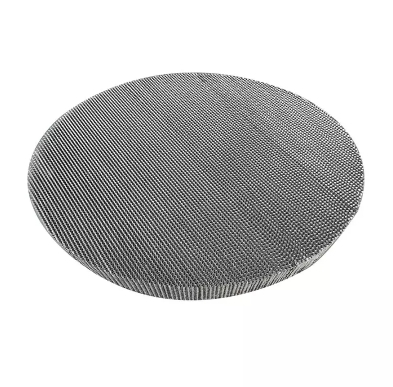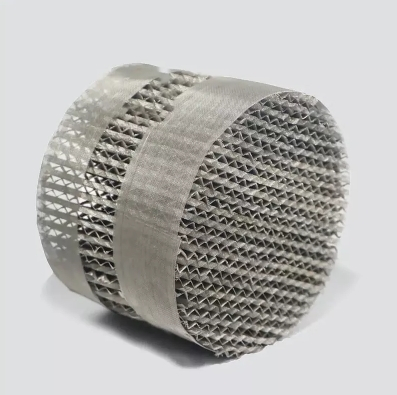Structured Packing: Key Features and Applications in Industrial Processes
Wangdu (Hebei) Chemical Engineering Co., LTD
Introduction
Structured packing is a type of packing used in various industrial processes such as distillation, absorption, and chemical reactions. Unlike random packing, structured packing is designed with a precise, regular arrangement of elements, offering a highly organized structure that facilitates efficient mass transfer. At Wangdu (Hebei) Chemical Engineering Co., LTD, we specialize in providing high-quality structured packing solutions that meet the specific needs of a wide range of industries, improving process efficiency and reliability.
Design and Composition
Structured packing is typically composed of materials such as stainless steel, plastic, or ceramic, depending on the chemical and physical properties required by the application. The design of structured packing is usually in the form of corrugated sheets or mesh elements arranged in a specific pattern. This structured arrangement creates an organized flow path for the fluid, promoting uniform distribution and minimizing the likelihood of flow maldistribution.
Some common types of structured packing include:
Metal Structured Packing:
Made from stainless steel or carbon steel, this type is highly resistant to high temperatures and corrosion, making it suitable for demanding applications such as petrochemical processing, high-pressure distillation, and chemical reactions.Plastic Structured Packing:
Plastic structured packing is lighter and more corrosion-resistant, making it suitable for applications involving less aggressive chemical environments, such as water treatment and air separation.Ceramic Structured Packing:
Ceramic packing is resistant to high temperatures and chemically harsh environments, making it ideal for processes in industries such as petrochemicals and pharmaceuticals.
Working Principle of Structured Packing
The key feature of structured packing is its precise design, which allows for optimal liquid-gas interaction. The structured arrangement of the packing provides a uniform surface area, which promotes the efficient exchange of mass between phases. As the liquid flows through the packing, it forms a thin, uniform film that facilitates mass transfer with the rising gas. This organized flow path minimizes the chance of channelling and ensures a high degree of contact between the liquid and gas phases, leading to enhanced process efficiency.
The efficient design also helps reduce the pressure drop across the packing, which can be crucial for reducing energy consumption in large-scale operations.
Applications of Structured Packing
Distillation Columns:
Structured packing is widely used in distillation columns to improve the separation of components based on their boiling points. The organized flow of liquid and vapor results in better separation efficiency, making it particularly beneficial for processes requiring high precision and minimal energy consumption.Absorption and Stripping Towers:
In absorption and stripping towers, structured packing enhances the mass transfer between gas and liquid phases, improving the absorption of gases into liquids or the removal of components from liquids. This makes it ideal for applications such as gas scrubbing, carbon dioxide capture, and solvent recovery.Chemical Reactors:
Structured packing is used in chemical reactors to increase the surface area available for chemical reactions. The precise arrangement of the packing improves mixing and promotes better contact between the reactants, ensuring more efficient reactions.Heat Exchangers:
In heat exchangers, structured packing helps to optimize heat transfer rates by providing increased surface area and promoting turbulence. This results in more efficient heat exchange and better overall performance of the system.
Advantages of Structured Packing
Improved Mass Transfer Efficiency:
The uniformity of the packing structure allows for a more consistent and efficient interaction between phases, leading to better separation or reaction rates. This enhances the overall performance of processes such as distillation, absorption, and chemical reactions.Lower Pressure Drop:
The organized flow paths provided by structured packing help to minimize the pressure drop across the packing, which reduces the energy required to pump fluids through the system. This can lead to significant energy savings in large-scale operations.Compact Design:
Structured packing offers a compact design that allows for higher packing densities in columns or reactors, which can result in more efficient use of space and equipment. This can lead to a reduction in the overall size of the system, making it more cost-effective.Long Service Life:
Structured packing materials such as stainless steel and ceramics are highly durable and resistant to wear, corrosion, and high temperatures, ensuring long service life and reliable performance in harsh operating conditions.Reduced Fouling:
Due to its precise design, structured packing tends to be less prone to fouling or clogging compared to random packing. This reduces the frequency of maintenance and increases the overall reliability of the system.
Conclusion
Structured packing is a highly effective solution for a wide range of industrial processes, offering enhanced mass transfer, reduced energy consumption, and improved efficiency. At Wangdu (Hebei) Chemical Engineering Co., LTD, we are committed to providing our clients with high-quality structured packing solutions tailored to meet the specific demands of their processes. Whether for distillation, absorption, or chemical reactions, our structured packing products help optimize performance and ensure reliable operation in a variety of industries.
References
M. T. Karassik, "Distillation and Absorption: Advanced Packing Design," Chemical Engineering Science, vol. 61, no. 5, pp. 1334-1343, 2022.
H. G. Winter, "Introduction to Structured Packing in Chemical Engineering," Industrial Chemical Engineering Journal, 2nd ed., McGraw-Hill, 2020.
L. J. Douglas and M. E. Jones, "Optimizing Mass Transfer in Chemical Reactors," Chemical Process Engineering Review, vol. 48, no. 7, pp. 745-756, 2021.
S. P. Johnson and W. D. Carter, "Applications and Benefits of Structured Packing in Gas-Liquid Contactors," Journal of Chemical Engineering and Technology, vol. 38, no. 8, pp. 1152-1160, 2020.













